When you hear “free motion quilting”, what thoughts immediately pop into your mind? Does the thought of free motion quilting (FMQ) fill you with joy, or terror, or somewhere in between? As I’ve been sharing my experience with Free Motion Quilting Academy, I’ve heard a lot of your thoughts on FMQ and let’s just say many of you are keeping yourselves socially distanced from free motion quilting!
I get it. Free motion quilting seems like a biiig hill to climb. I mean, I’ve just checked my blog archives, and I first tried free motion quilting in March 2013, and I still have had phases where it just feels too hard and too much to do! Joining Free Motion Quilting Academy in October was me telling myself that I need to both reignite my love for free motion quilting, and to also learn some new skills and motifs to make my FMQ menu a lot longer when it comes to choosing what to quilt.
So, here’s 5 excuses myths I’ve heard about free motion quilting, and the truth rebuttal to tell yourself in your journey to conquering that free motion quilting hill.
My machine is not good enough
Guess what? You can free motion quilt on any machine. Is it easier on a bigger, more powerful sewing machine? Absolutely! But the size of your machine should not hold you back from starting your free motion quilting journey. My little $100 sale machine and its 4″ x 5″ throat space (if I’m being generous in measurements) got me started with free motion quilting, and my can-do stubbornness carried me through several large quilts. The largest quilt I quilted on it was a 60″ x 80″ quilt, with switchbacks and loopy meander.
The key to quilting on a small sewing machine is to break the quilt up into sections. Whether it’s block by block, or row by row, don’t overwhelm yourself by thinking of the whoooole quilt, just focus on one part at a time. For the blue and green quilt above, I quilted each row of green one at a time with switchbacks (simple back and forth lines). I then quilted the blue sections with a big loopy meander, so I only ever had to focus on a small part of the quilt at a time.
Another good tip is to get the hardest part done first. That’s usually the very centre of the quilt, where you’ll have the most bulk under your machine at any one time. Or if your chosen motif has you moving from one edge to the other, start with the most bulk under the machine so that it’s only getting easier from there.
I’m not creative enough
Hey, guess what? You make quilts, you play with fabric, you ARE creative! So perhaps a more accurate myth is “I can’t draw”. I know, it feels like going from sewing seams to doodling with thread is a big jump to make. But don’t you dare tell yourself you aren’t creative enough to free motion quilt, mk?!
Ok, now that I’ve done that firm best friend truth thing, let’s get practical. The first step to learning free motion quilting doesn’t need a quilt sandwich and thread. Yes, you read that correctly! Start with paper and pen, and fill page after page of free motion quilting motifs to get in the flow of creating them. This helps your muscle memory develop on how to move around the quilt top and fill in the space with ease. And it’s much easier to start a new page then ripping out stitches* because you’ve completely gone off track and there’s no redemption 😉
*In general, I recommend to not unpick your quilting unless you have major tension or basting issues! Wonky quilting is part of the handmade charm, and once the quilt is washed, you’re really not going to notice it.
Then you move to practice quilt sandwiches. This is when you use up those, uh, less than desirable, fat quarters hiding in your stash and batting offcuts to practice moving the quilt sandwich through the machine and getting a handle on connecting your hand speed to your foot pedal speed.
You can practice these steps over and over as many times as you like before moving onto the real deal and tackling a quilt project! When you are ready to do it for realz, I highly recommend starting out on a mini quilt or baby quilt, rather than jumping straight to a full queen-sized quilt. But hey, sometimes you just can’t wait to hit the big leagues, so you do you!
Free motion quilting takes so much time to do/learn
The best things in life take some time to flourish. You don’t plant seeds in your garden and expect to find flowers the next day! The same goes for working on any quilting project. How long did it take you to make the quilt top? The quilting stage is just as important a part, and it deserves to have the same amount of thought and attention to detail as we spent on carefully choosing our fabrics and placement.
There are absolutely those quilts that just need to have something quick and easy quilted, don’t get me wrong! But if we just intuitively know how much a quilt would shine with some free motion quilting, it’s worth taking the time to do so. That quilt deserves the special attention! It is worth slowing down and making the time to finish the project the best that we can. Take it day by day, section by section – it’s a marathon, not a sprint.
Plus, at the very least, I reckon a basic or loopy meander is actually 10x quicker than straight line quilting because you don’t have to stop and start a hundred lines, you just doodle your way across the quilt. Squiggle squiggle done.
Now, as for taking the time to learn… It’s ok to take it slowly. I’ve talked quite a bit about the value and importance of creative play and growing as a creative, and this falls under the same category. Little by little progress adds up!
I started Free Motion Quilting Academy with the expectation that I would finish on time and graduate this month. And for the first few weeks, I dedicated a couple of hours each week to practicing my free motion quilting. Until life had other (good!) plans, and instead of writing off my progress as a waste, I have simply adjusted my timeline to work at a slower pace with the aim of graduating with the next round.
It does take time to learn. New skills always do. But if you start now, just imagine where you’ll be in a year’s time!
Straight line quilting is good enough
Yes, straight line quilting is definitely a valid option for any and every quilt. But you know there are some quilts you make that would go to the Next Level if there was free motion quilting motifs used to finish it off. The quilts that aren’t block-based-repeat quilts are the main ones I’m talking about – sampler quilts, medallion quilts, English paper pieced quilts, and applique quilts will all SHINE when custom quilted to show off the various shapes within the quilt design.
There are also quilts that really benefit from a softer, curvier quilting design to help contrast sharp straight lines in the quilt top and to create a softer visual texture. I once sent a quilt to a longarmer and requested a triangle-ish angular all over design… and in hindsight, regret the decision. The quilt was my Modern HST Sampler, and I thought the chosen design would compliment the quilt full of triangles. Instead, I feel that there’s now no reprieve from the pointy points going on in the quilt top, and the quilting and the blocks are competing for attention.
It’s expensive to take a class
Those quilts that deserve to go to the Next Level? You have two options – quilt it yourself, or send it to a longarm quilter.
Sometimes it’s worth sending them to a longarm quilter and I’ve done plenty of that in my time. Especially when I’m running short on time and/or want a specific quilting design like this Japanese one for an Origami quilt. But that’s not cheap either – you’ll be paying at least $150 for a small throw for a general all-over design. If you’re wanting custom quilting, you’re probably looking at least at double that! It was well over $200 for this queen-size quilt for the longarming, but it certainly wasn’t the kind of design I could have done myself (plus I was in a time crunch for Christmas).
Which is why it’s worth learning how to do some free motion quilting yourself, so that you can have quilts that not only are beautifully quilted by yourself, but also save your wallet too for those quilts that really need the expert longarming touch.
Good classes with good teachers are going to be an investment. It’s an investment not only in money, but in your time and effort too! But the skills and confidence you learn are with you for life! Give a woman a fish, and she’ll eat for a day. Teach a woman to fish, and you’ll feed her for life.
When it’s once again safe to do so, I highly recommend checking out what local quilt stores or big quilting shows offer in-person quilting classes so that you get some hands-on guidance and practice. The benefit of these types of classes are that you can get in-person teaching to your specific quilting needs and problems. Local quilt shops are usually a bring-your-own-machine situation, whereas big quilt shows are usually machines-provided. This saves lugging your machine around, but it does mean you will need to adjust your learnings when you get home to your own quilting set up.
In the meantime, there are online options that are both safe, and that you also get to attend from the comfort of your own home (and quilting set up)! There are shorter options that provide an introduction to free motion quilting, and are a cheaper option to get started. Or there are more comprehensive options like Free Motion Quilting Academy that go really in depth and teach a huge range of motifs. This particular option is the same price as sending a quilt to a longarmer for an all-over design (and certainly cheaper than getting one custom quilted!), but again, you get the skills to keep for life. And spoiler alert – a little birdie has told me that there will be payment plan options next time FMQA opens for enrolment, making it even more accessible!
So have I convinced you that free motion quilting is truly achievable no matter your situation?! Because you can do it! Just take it one step a time. If you have any other myths/FMQ questions, leave them in the comments and I’ll do what I can to help you out!
Post contains affiliate links. Thanks for your support!
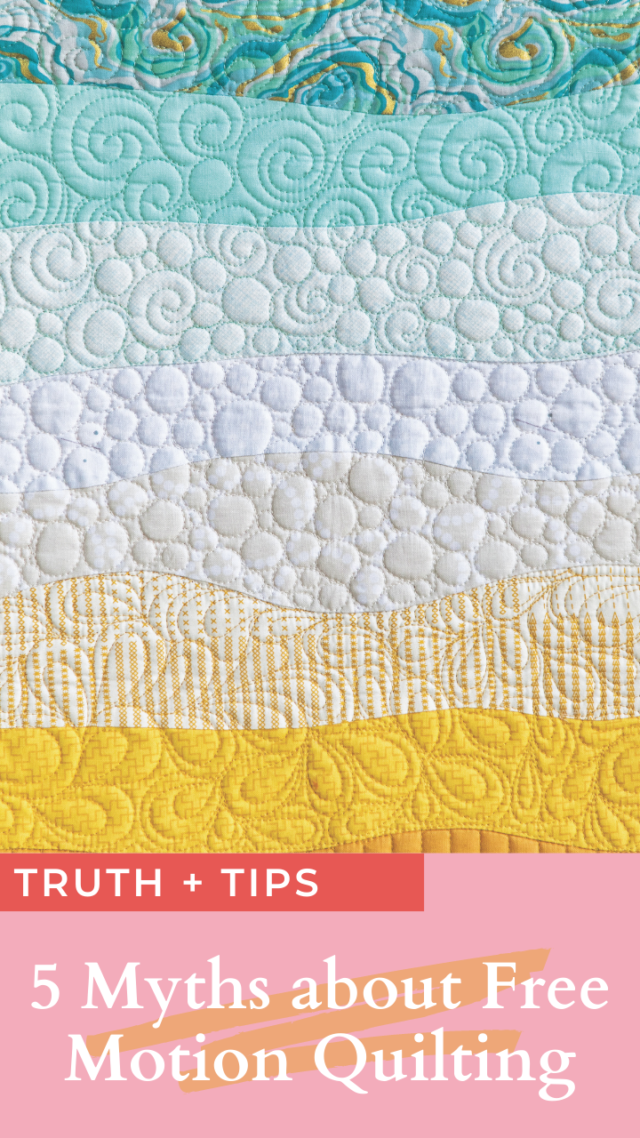
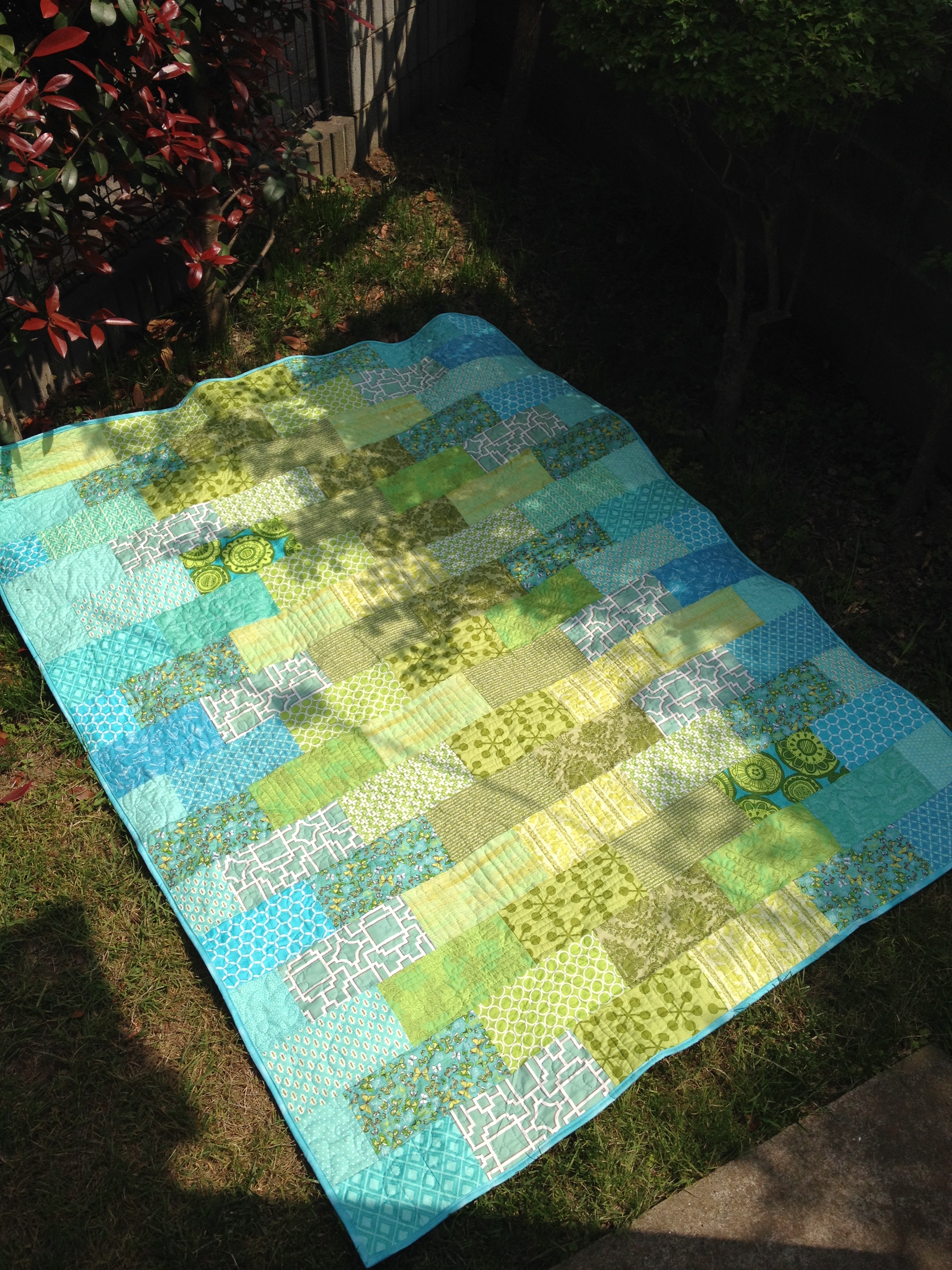
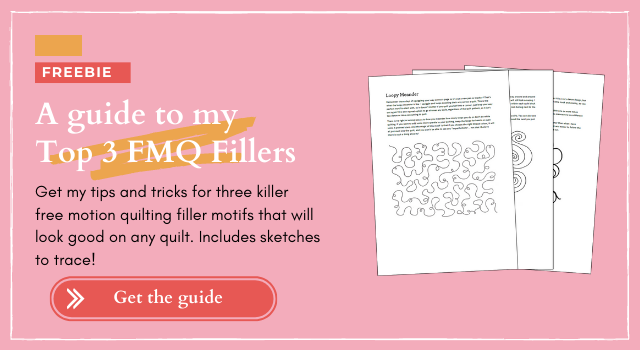
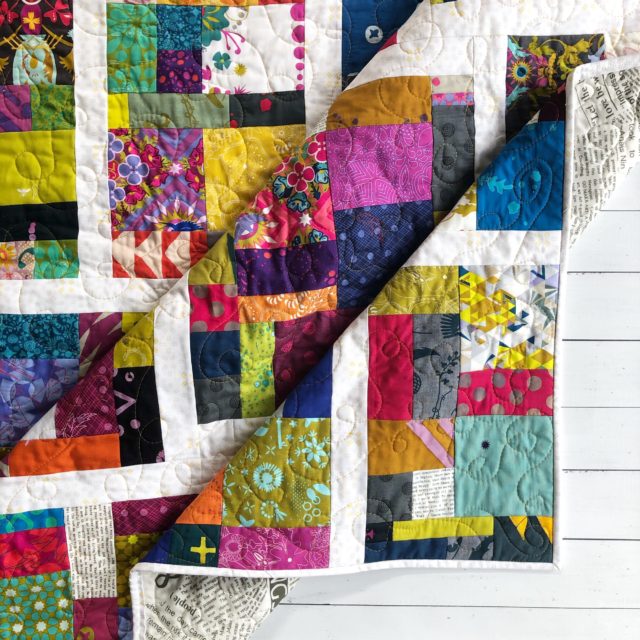
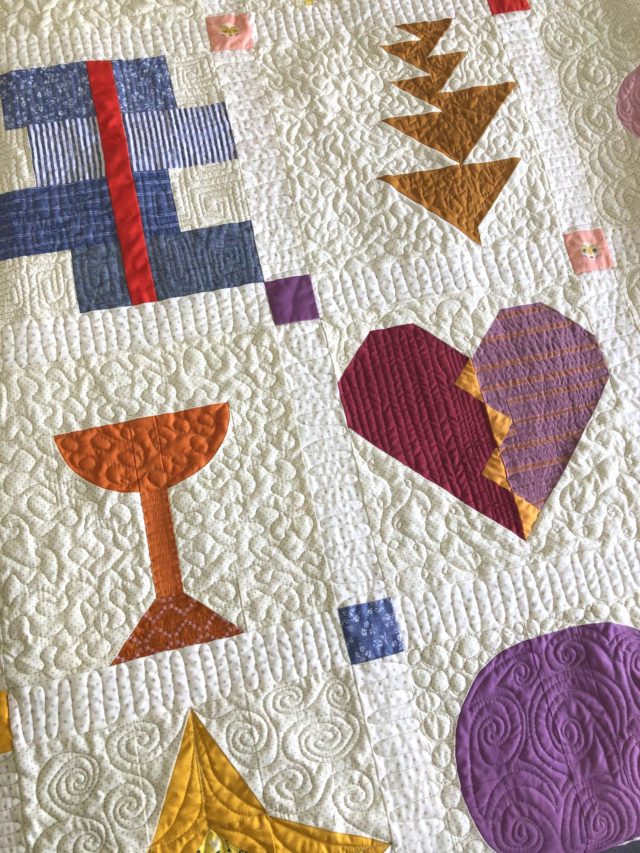
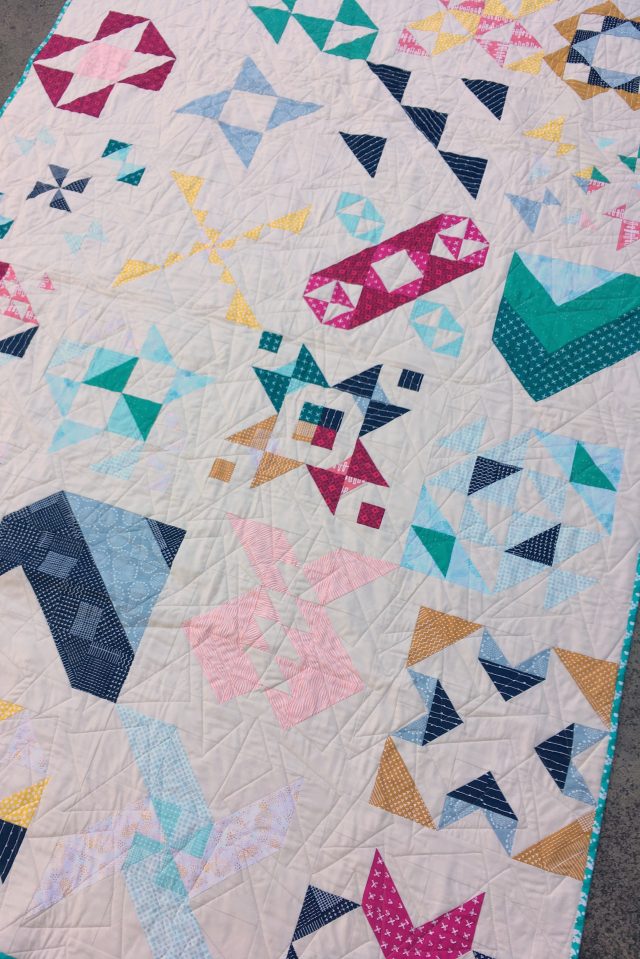
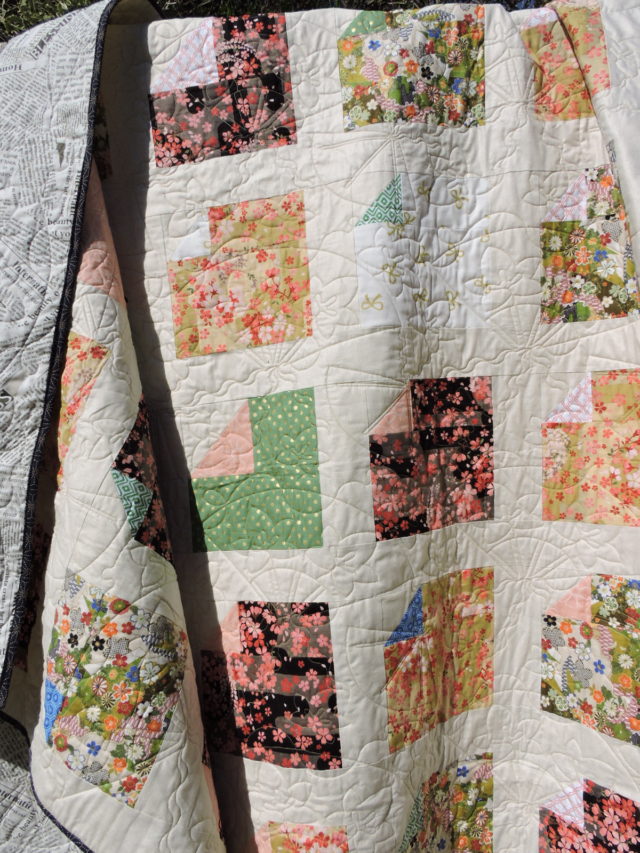
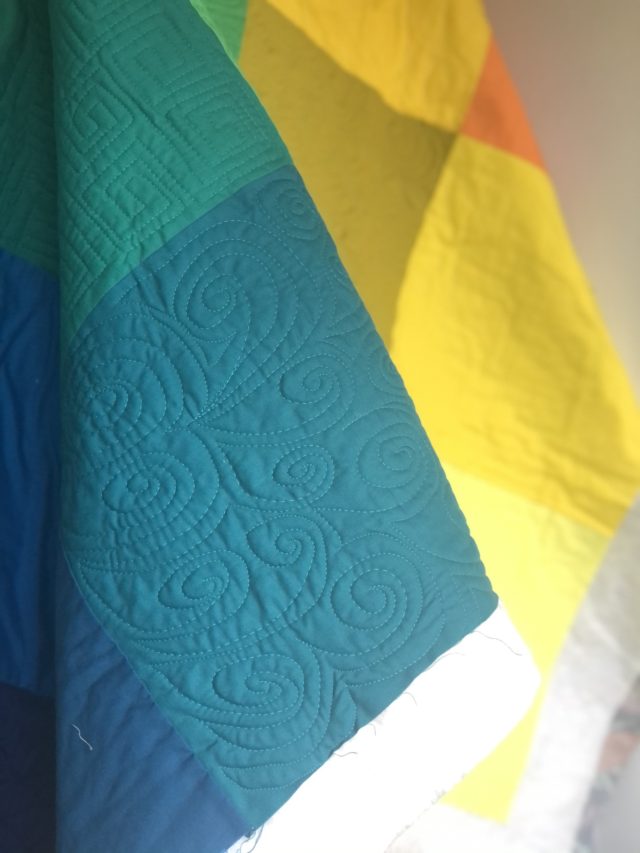
Kathy E. says
So many good points here! My luck with FMQ is about 50/50 for the most part. I’ve had best results with the simple meander and loopy-loo design. Lately, though, I’ve not gotten very far because of so many skipped stitches. It drives me crazy and nothing I’ve done helps to eliminate it. Any ideas you could share are appreciated!
Alyce says
I am a mad keen fan of loopy meander! Skipped stitches are often because your hands/pedal speed don’t match, especially going around curves. It can also be a tension issue, but with FMQ and tension, you’ll often have other “symptoms”. A third option is make sure you have the right sized needle (90/14) and a fresh one at that!
gerri wright says
I was having that issue when I was trying to quilt on my Singer machine. The quilting foot was not adjustable, and it was far too high for what I was doing. If you can hear “popping” noises coming fro the needle, your foot is too high. Once I figured this out, I’ve had much more success.
Susanne Reinig says
Well. I´m quite new to fmq, but recently I just wanted to add a bit of loops on a doorhanging mini quilt .Thinking, that I practiced that good enough, I noticed in the end, that on the back side I had bad loops as well , the ones where the thread from the frontside is torn further making different loops ( sorry my English can´t explain it better). What did I get wrong?
Alyce says
That usually means you need to tighten the top tension – it’s a common free motion quilting issue.
Joan says
I’ve read this a couple of times and agree 100% that I can find all kinds of reasons to back away from something new. But each quilt I do teaches me one more thing (like check the tension more frequently as well the the bobbin) Sometimes I use small templates from the kids, shapes, animals, letters, with iron away ink and connect them with loops. Thanks for the encouragement. Always enjoy your blog.
Alyce says
What a clever idea to use your own templates!
Ann Kilwien says
Lot of good ideas with your web site. I call myself a beginner quilter, although I am 73 and have been quilting for 20 years. Usually a good stiff drink and a big slab of chocolate seems to get me thru it.
Linda theisen says
You are a smart woman! And know how to make quilting relaxing! Chocolate and a beverage!
gerri wright says
Great article! I was scared to do much at first because I didn’t want to ruin my quilt I had worked so hard on. I found Angela Walters (midnight quilter) on youtube, and she has changed my quilting life. I have now come to the realization, that as long as you are consistent, “it will be fine” as she likes to say… And it REALLY IS! I started out with a meander, and then went to pebbles, and then feathers. I am now trying to branch out with rulers, stencils, swirls, geometric, dot to dot, etc.
Ruth says
Your article was certainly a moral booster for me, great advice. Have not had the courage to do FMQ, but I feel better now after reading your blog.
Bev says
I love the “play” FMQallows! I think a basic loopy meander is my favorite because it then allows me to throw in extras like a heart or a leaf or a flower or Star or pretty much any shape I can imagine. It makes quilting each quilt different
Penny Calhoun says
Do you mostly use white thread for FMQ? And how do you think it would look to change thread colors to match what block you’re working on at the time? I’m thinking of how the backing would look…?
Iam a total chicken and use transparent thread for all of my FMQing. 🥴